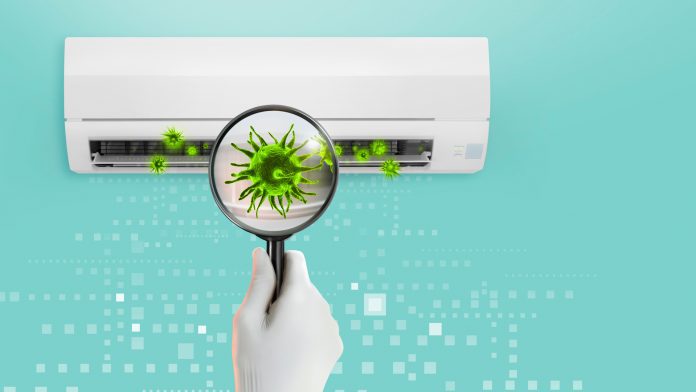
A team of Korean researchers have developed groundbreaking plasma air conditioning technology that can effectively eliminate coronavirus aerosol.
Pioneered by experts at the Korea Institute of Materials Science (KIMS), the novel plasma air conditioning system has demonstrated exceptional performance at inactivating the coronavirus aerosol in real-time. This development is potentially a significant step toward controlling the spread of the disease, as aerosol is the primary infection vector of COVID-19.
The Korea Institute of Materials Science project received funding from the Ministry of Science and ICT and was supported by the Fundamental Research Programme of KIMS.
Combatting coronavirus aerosol
Coronavirus aerosols are solid or liquid particles of the disease that are emitted either directly from the source or produced when gases are converted into particulate matter in the air and are the main transmission source of the virus.
To mitigate coronavirus aerosol, the KIMS researchers designed a plasma filter that employs dielectric filter discharge technology to inactivate the aerosol with reactive oxygen species. Analysis revealed that the coronavirus was inactivated by around 99.8% after passing through the plasma filter, which is comprised of catalyst materials for ozone removal that can be applied to air purifiers and air conditioning equipment.
Additionally, the researchers installed a catalyst at the rear end of the plasma filter, which helps to regulate the concentration of emitted ozone, keeping it below 0.05 ppm. This cutting-edge addition of the catalyst solved the ozone emission issue that is traditionally a weakness of plasma technology, enabling the filter to achieve a range of standards related to ozone emission.
Evaluating performance
Until this research, previous coronavirus inactivation experiments have been performed using a liquid form of the disease in a petri dish, not in the virus’ aerosol form. Due to the dangers of high-risk viral aerosol experiments, it is incredibly rare to confirm the inactivation of coronavirus aerosol directly.
To overcome this obstacle, the KIMS team collaborated with researchers from the Masan National Tuberculosis Hospital, who developed an experimental device proficient at evaluating virus inactivation performance by spraying the aerosol of the coronavirus culture medium. The team is confident that if their plasma filter technology is applied to air purifiers and air conditioning equipment in medical and multi-use facilities, it will significantly suppress the spread of infectious diseases.
Dr Seunghun Lee, the lead researcher and a senior researcher at KIMS, said, “Developing various disinfection materials and parts is important, but there are insufficient empirical studies using aerosols of a highly pathogenic virus. By utilising the inactivation data of the coronavirus aerosol obtained in this study and predicting the performance of bio-aerosol removal in a virtual space using digital twin, we plan to conduct follow-up studies to calculate the processing time and optimal arrangement required for disinfection of multi-use facilities.”








